Notes:
Turn towards the image in the humanities.
Iconic Turn / Pictorial Turn
Emergence of this field of study.
First Symposium - 20 contributions, only 4 from women (critic of this emerging field) - no actual or Image makers are included in the discussions.
> This is the idea of our class: to include the creative perspectives.
They trace the emergence of the image through art history and philosophy.
Until 2007 studies had failed to include
Day 1
Boehm and Mitchell are quite different in their approach.
The question of
_the image signs
_the nature of the turn
How are they similar - how are they different ?
Does it have to be seen as a paradigm shift or a fashion? a trend?
Paradigm shift: concerning methods of scientific discipline.
Whole exchange between the two theorists shows fundamentally different approaches.
Pictorial Turn - the term
How are they different from each other?
Boehm
Mitchell
Defines it as new kind of scientific questioning
Interested in the meaning and criticism
analytic structure
one paradigm shift
Anthropological view -
always against the backdrop of social and political issues (e.g. making images female, making them black )
looking e.g. at things from popular culture; the selfie
The ideology for images
There is not the one and only turn - there has always been a new turn with each technique
> noticed first by iconophobes e.g. think now of new technology
LACAN -
Demand - need = desire
need: organic need , can't full fill on their own
e.g. Babies have to be resourceful through signifiers to the adult world > this is first the introduction to the iconic world - e.g. mimicking; sign system
For Mitchell artwork or picture stand emancipated from the artist. - basic perspective philosophy behind his approach. Conventionally art historians and visual culture theorists contextualise.
He is interested in the life cycle - what does the image tell us today - how can we read the image today? Politics of art and culture - the social impact of the study of images.
> look at it in contemporary perspective vs. contextualising in art history.
Notes - What do Pictures Want? Discussion
Move to look at images from Anthropomorphic view
personal encounter: looking and being looked at.
theory of interpretation of things created by objects - acknowledging
creating an encounter - giving them a voice
analogy with hat - sign of acknowledgement - reciprocal recognition " you have seen men- I have seen you
Mitchell takes nothing for granted.
Systematic move for the viewer - reader to reflect on their own position.
> He is aware of this controversial approach (uses controversial view to change perspective)
To put the image is "the other" - women, people of colour, animals
- the discriminated voices - this is why he is asking the question at all - to free them from the control of language - you have to invent new discourses -
Metapictures - pictures about pictures
Linguistic language and visual language- communication channel.
Metapictures with different characteristics/traits.
Classification:
1. picture that refer to themselves
2. picture that refer to other pictures
3. dialectic pictures
4. meta meta pictures * further reading from Foucault
5. speaking meta pictures * further reading from Foucault
> different kinds of interpretation
2. Interpretation approach: How pictures are made
3. e.g. Duck-rabbit; combining different readings into one
4. meta-meta - e.g. Las Meninas: unites the traits of the pictures before : 1. self referential; we see the artist who made it ; 2. other pictures- making pictures- we see the canvas from the back 3. who am I ? am I kind and queen ? am I me? ; a representation of representation
5.language adds a meta level - couples different languages ;
paradoxical element; 'ceci n'est pas une pipe' > this relation between text and picture are contrary - cannot coexist but still do > CONTRADICTION BETWEEN IMAGE AND TEXT
what are metapictures?
- references _ this is the meta step ( to self or other)
- a type of paradox : a different perspective/possibility of reading them
- the process, the moment of being made > "we were made" > unveil the 'truth' of the process
- their own being - being animated, having an entity > so that it can even be self- referential ; to be self referential you need to have a 'self' / entity
_ you require the artist's intentions - do you? intentionally layered? > No , there is a logic and agenda behind, there is the intention to conceive it this way but the objective is not for us to read
- positive - negative readings of the pictures..
- the notion of the hyper -icon ; for illustration or if it refers to a whole theoretical universe
IMPORTANT THOUGHT: 'ART DOING THEORY' - USED NOT JUST FOR ILLUSTRATION BUT REFLECTION
Las Meninas on the Meta-level questioning the whole system of classical representation - by superimposing the position of us as the spectator - our position is already occupied by the King & Queen.
Metapicture: to reference another image - e.g. Kafka
reference to a mental image? does this still count as a Metapicture?
> then you have to know the reference to 'get it'
> the gap - this is a picture - what is it's status as a picture?
What is it in relation to its own making.
'the heady joy of meta movies'
Through own example of artistic work add to the field of discussion - not only illustrate but ADD.
Image - Medium - Body
new approach to Iconology - clarify definitions
first chapter: clarify his aim - talks about approach he wants to use to define these terms
necessary for critical Iconology - not only art but also societal and political issues because we are exposed to the power of mass media
Body - performing and perceiving body
the relation between the three changed throughout history
body is the link between Image and Medium
for this is important that we live in our bodies - are aware, perceive them
+ bodies as living medium
Relation of these three instances to Technology
visual image : what we see
virtual image : projected
analytic perception : technology and medium
synthetic perception : mental image that result in our perception
synthesis : interpreting with
synthetic : given medium
> describe the forming of image in our brain
tries to give clarify for terms we use to talk about Body - Image - Medium
we perceive image in media but rather we experience images through media
Author says its hard to define Image ; Medium annd Body is easier to define
Body ; perceive and experience the image ( often referring to the brain / bodily perception)
What is seen is integrated in a matrix of visual unconscious - disembodiment and re-embodiment
- in constant dialogue with what is already there are not - often we are attracted to what we recognise because it is pleasure-able to the brain - we reject things that we don't know **** really interesting thought !
> it's a performance to recollect images from this archive > idea that the brain has a filter ; the ghost of previous images shapes what we can see
psychoanalytical perspective (like Freud) archive of images cannot always be recollected during the performance of remembering
Every nation has a collective archive of images ( collectives Gedächtnis) - nation constructs itself through this common narrative - this nation is an imagined community - linked to Ideology
Medium ; image itself but also instrument to transmit images
Transmission - Image does not only exist it Happens through perception - Body
Involvement of an active body - gets a new perspective when we enter VR - no longer needs a corporeal existence - own body is separated during the experience.
Would like to introduce a new perspective to avoid using images as an artifact of (...)
also anthropomorphic view : human beings make images and images make human-beings
we need a critical contemporary iconology -
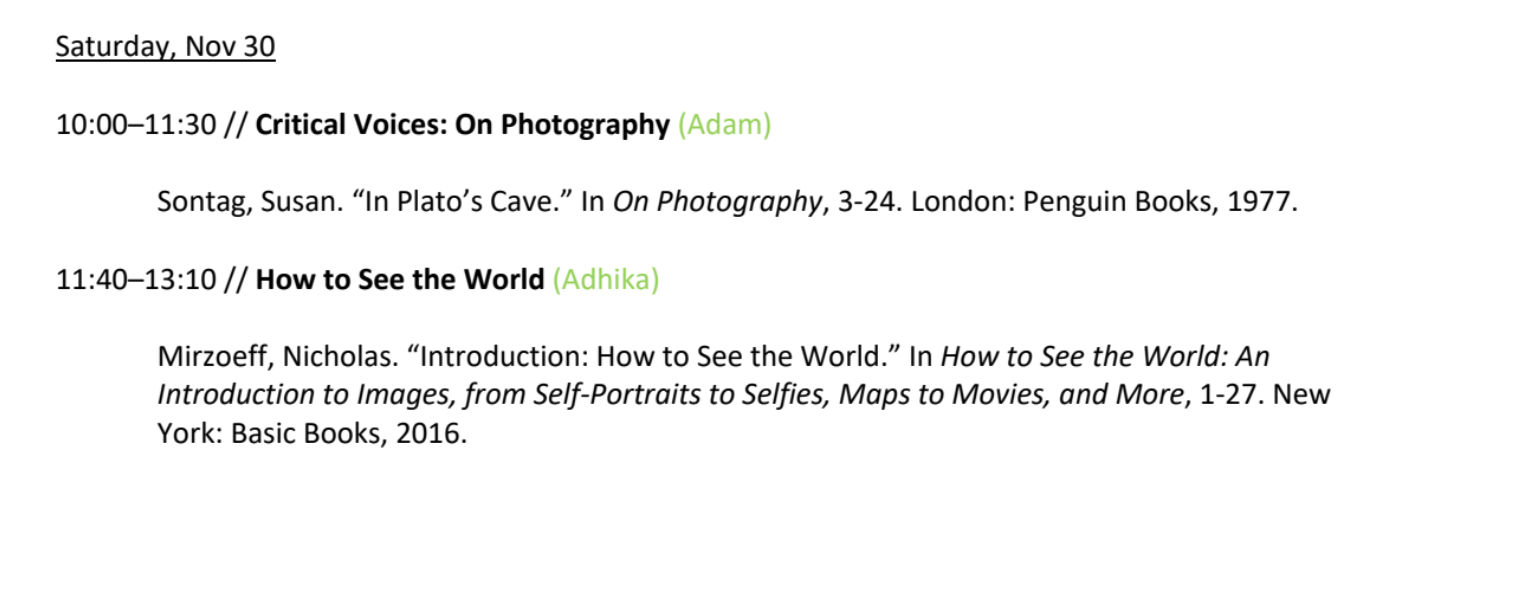
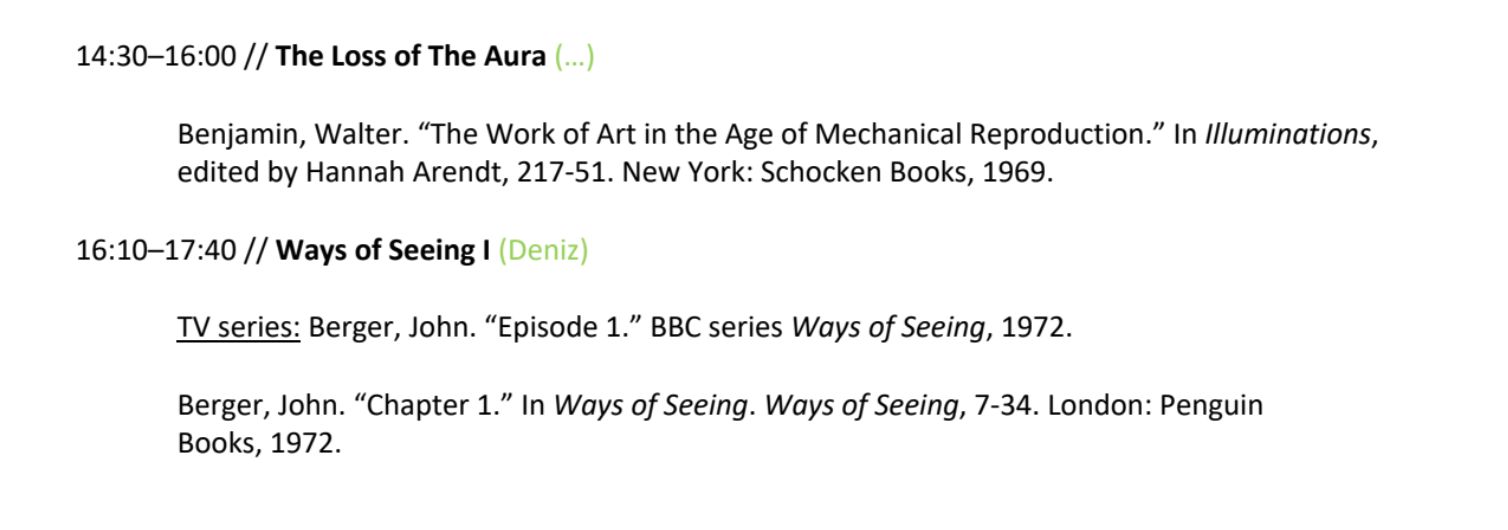
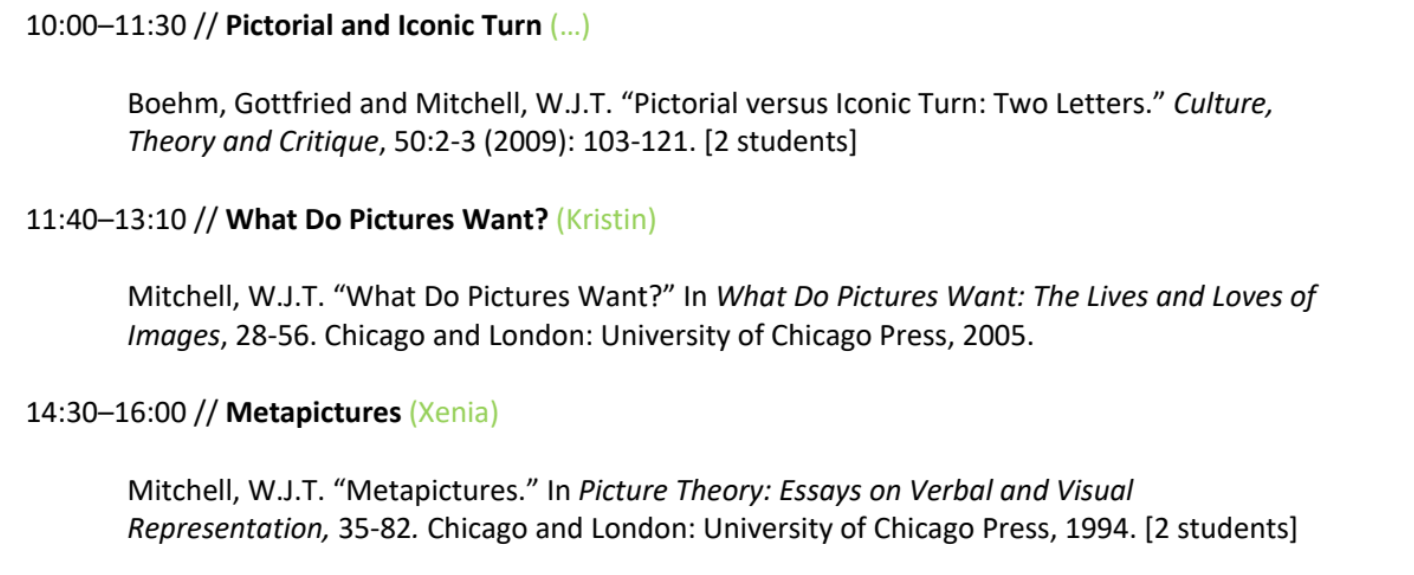
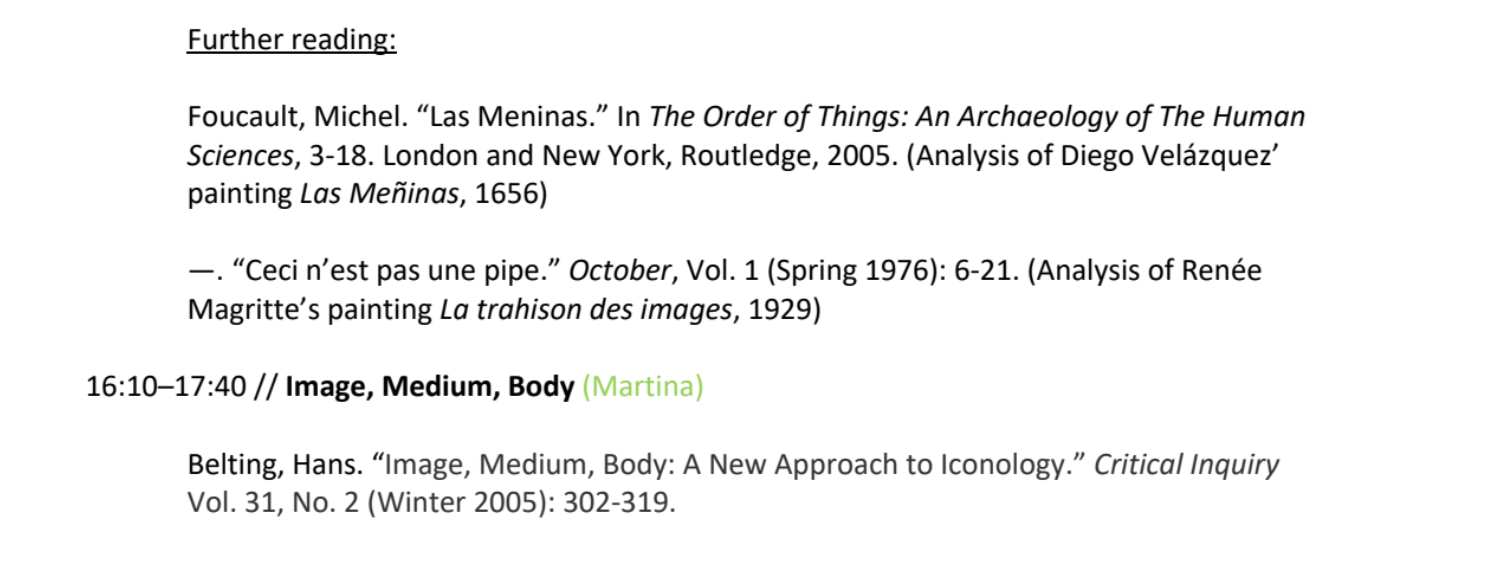
Day 2
First chapter in book 'On Photography'.
Overarching approach: - From Plato: the perfect idea (in heaven) can have the good - the beautiful and the true.
Analysing as a medium but also as an act within this concept.
Plato's Cave - humans are limited in their perception by their structures and whats socially expectable - in order to get to know the truth they would have to free themselves but the others would not believe the one who has broken out of the cave.
Human kind looking at photography like the projections in Platos Cave - photographs as reproduction - trying to display the world
+ has lost is purity because it always includes the makers perspective - who always makes decision base don taste. e.g. people can take the same photo but it turns out different.
> there is no reflection of 'the True' > only semblance of knowledge and wisdom
> are an interpretation of the world > subjective element cannot be denied
< this also questions the morality of photography itself > the element of AGRESSION - omnipresent ( the message and the didactic can be aggressive)
undying hunger for photographs
- alter and enlarge what is work looking at and what we have the right to observe
photography : an act of non intervention e.g. War photographer - instead of confirmation for what is being seen
Morality of the photographer: can be naughty depending on how the subject is perceived by society
+ Phallus symbol - comparison to weapons
mass amusement - social ritual in defence against society; possession of a past that is unreal + comfort in unknown places ( tourism - photography against anxiety and discomfort)
photography as proof
pseudo-presence by placing camera between human and scene
Photographs attached with magic e.g. to have someone with you
industrialisation: family rituals , beaucratie
changes your perception of the world
> intention help people see > makes photographer feel powerful
> links to what Sontag called 'creating a moment'
> and also what Sontag says about 'there is only space for things to be seen that society wants to have seen' p. 19 ' ideologically there needs to be space for them' >> how has changed since Sontags text ?
she uses reality and true synonymously which could be questioned in this essay
difference between a evidence photograph, documentation vs . artistic
taking photograph does not only capture but construct /construction of reality
we have made so much space in our ideology now for pictures to be seen > what does this do for social impact - some pictures impact other dont
* also thought maybe we made this space through the online space but what does this do with the space in our mind?
anaesthetised - not only they loose their impact but through the repeated viewing they diminish the object
>> Documentary: The Cleaners
I imagine today the question would be linked to consent? Do we have to see - do we have a choice not to see?
Moral impact or effect of pictures - they need to be set into the appropriate context of feeling an attitude
- must need personal historical significance - otherwise can lead to public disinterest > how powerless photos are ..? or rather the importance of the presentation!
the power of photography for history, we'll remember e.g. War War 1 as biggest genozide but it's not. We can only not remember others because there is no supporting media. (but also white supremacy?)
questioning of war photography - legitimising the action - theatricalising their suffering - de-sensitised
Do war photographs not have an effect because war photographers are so de-sensitised?
Interesting that photographs are constantly stripped of information
- now there is a site to embed information into each corner of the image < such a simple thing but shows how we WANT the photograph to be stripped of the original information.
How to See the World - Nicholas Mirzoeff
Blue Marble - showing connectedness to a global surrounding
Circulation > entering into age of being visual society
Formula of change = factors of growing + networked cities + changing climate
- young , urban, wired and hot p.5
Age of Selfie - space selfie reflects how we see ourselves amongst the world.
Computing - we believe something to be whole but it's separate - is it showing our separation or our multi-national view: ? you can't see the world from one point you have to see it from multiple points ???? is that the point why he is saying this?
As people continues to change culture continuous to change.
Toolkit: p.14
we are constantly processing - rendering visuals > learning not to see as a 'power saving'/ processing mode
References to past way of mechanical / technique /seeing and linger in our subconscious but no longer serve function - polaroids, camera shutter.
New mechanics are now editing softwares - we are aware of the editing.
Imagined communities through digital means
Computation also in analogy for how we combine our own reality
Physical manifestation of time - Deep Time - Metapicture the visual of it has taken so much time while the picture itself only took a second : self-referentiality on time
Then absolute time was created forced by technology and connectivity (industrialised connection)
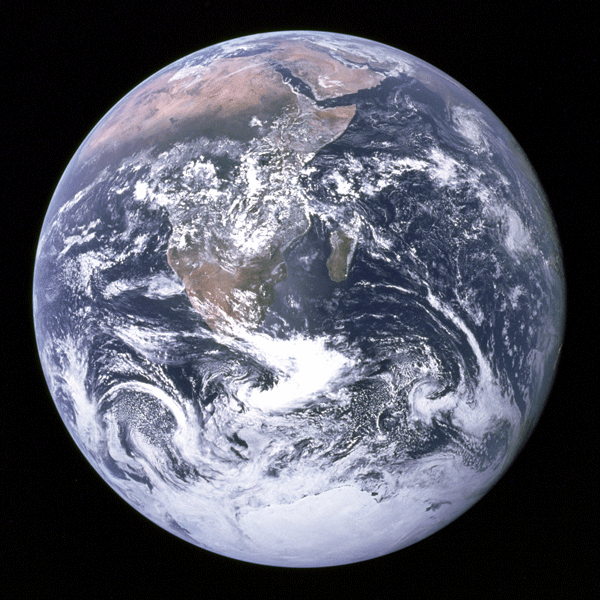
Time artwork - show impact of time on our lives - how as being be are obsessed with time to measure - media now is time stamped - you cannot take the visual of time - it's not technically possible to take away the time.
Understanding and being conscious about what you are seeing. B filtering you can bring in consciousness - how they have an impact
our ways of seeing enabled by machines - e.g. not able to turn of the sense of time e.g. camera shutter sound
; through socialising and imposition of machines we learn to un-see
>> so is to UNSEE TO SAVE ENERGY OR IS IT REGARDING UNSEEING FOR SEEING TO MUCH?
connectivity is not the same as unity
e.g. financial system shows the connectivity but people cannot travel so freely
>> on what level are we connected?
Dig a bit deeper - images are not so black and white or to be taken for granted.
flexible zone of viewing : the correction - the adaption - the framing - the colour correction
illusionary reality - what does a photograph represent( is it documentation - is it setting?) the world we live or an alternate reality ? or is it reality because we take it as true?
>> GAN networks : https://thispersondoesnotexist.com/
Construction of reality - most things are mediated - computation - the new archives are digital
circulation of the sensible
commons to form reality
The Work of Art in the Age of Mechanical Reproduction
(to develop a theory as a counter concept to the aesthetics of the political views on art of the Nazi regime - Facism)
During the time the regime instrumentalised media to propogate their belief
based on Marixst theory - sub structure and super structure
sub structure : forces and relation of production
super structure: state- institution - power structures, roles and rituals
says that reproduction devastates the aura -
politicisation / agenda behind it
decay of aura in positive and negative aspects ( depretion of the artwork but great potential - through the loss of uniqueness political function becomes possible)
concept of uniqueness
epilogue: questions of arts and politics
in principal has always been reproduce-able but mechanical is something new -
reproduction gains a role within the artistic practices
first notion of the aura: "Even the most perfect reproduction of a work of art is lacking in one element: its presence in time and space, its unique existence at the place where it happens to be. This unique existence of the work of art determined the history to which it was subject throughout the time of its existence." p. 3
shattering of the tradition - the emancipation from the connection to the ritual gives art another function > this is the potential political function
mechanical reproduction has the potential to free the picture from the aura - this is political
mechanical reproduction + circulation brings artwork to viewer > spatial closeness > creates new individual relation for each viewer
what about net-art ? what about artworks that are mechanically made and made to be mechanically distributed?
> this is where Walter Benjamin sees great potential?
- because of the detachment from the ritual and decay of the aura , opens up new possibilities - through flux of images has a vast potential , to reach load of people in new combinations - everyone can use , compose these images , apply to new medium - great potential in the mobilisation of images
> great potential - there is no policy , no monopoly in contrast to Nazi regime e.g.
the original becomes most clear when you look at performance - performance seems like a contra to the loss of the aura
GNU networks - big discussion; who is the artist?
Aura can manifest beyond visual - to sound ; e.g. political speeches Hitler >> idea that aura can be created by calling upon ideas you have in your head???
two auras - (1) historical objects, artworks - unique value of the artwork (suggest material source - from which something emotional rises up)
(2) natural objects
Aura of a person is not transmissible through a photograph
advertising tries to create aura - re-create moment of authenticity because there is human sense of the aura
Ways of seeing - Berger
Mystification is the usual visual culture (classical art historians need the contextual, don't find it possible to detach this from philosophical concepts)
Our assumptions concerning beauty, truth, genius etc. mystify the past.
> this leads us to miss out own perception
suggestion that by knowing less we see more - through contextualisation comes mystification - when we add contextual layers we narrow what they can mean (like a preset)
reproduction creates manifold opportunities for context - takes it out of time and place - not present in one time > instead new value
manipulation e.g. by cropping changes meaning
words as way of manipulation
Silent medium - part of why they are striking
perception: centred on the eye of the beholder (Las Meninas)
Berger challenges this perspective
In comparison to Benjamin here the aura is actualised in the market value - we substitute it
what matter sis the expression of the work itself, the meaning that unfolds without the context > we need to de-mystify to actually see the image
Interesting that a platform like @guccibeauty references the Male gaze and John Berger
Naked is to be I in contrast to the nude which is to be objectified
the role of nakedness as it functions in the real world
female porn - female gaze ? How media creates and arranges meaning.
In cultures like India ancient artworks show e.g. sex scenes and they are equlised
the male gaze is now reimposed upon the artwork
e.g. japanese sexual artwork show female power
when the body is objectified it becomes the nude
SELFIE IN THE ART HISTORICAL CONTEXT OF THE SELF PORTRAIT
- Mirzoeff looks at codes of the portrait through which we see and into which the selfi falls into
Own interpretation of presenter: Easy and fast way we present ourselves to the public - a bridge between inside world and outside world
to see the selfie as a development of the self portrait
Why was the celebrity selfie retweeted so often ? start of visual culture move away from self portrait
selfie as an activity that makes us look like something bigger
Reading of Las Meninas
1) shows the divine right of Kings - majesty - separate and assigned by God
this is countered by
2)the power of the artist transferring the power of majesty to the artist herself -- now the elite status of the artist is taken for granted - it was not
Mirror is a visual bridge between past, present and future. - link to today and the selfie
self as performance - and can change corresponding to the media at our disposal
Cinematic gaze informs how we see ourselves
selfie as performance of self-image
affirmation as a female artists - Lebrun first women in the royal academy in this context she portrays herself and democratises the self image - she's liberating herself (on the urging of Marie Antoinette) - she challenges the gender of the portray
survival of self portrait formulas in todays's selfie
Duchamp - staging oneself - costumes, makeup > to perform an identity > to the extreme of the face filter > are Face-filters now the equivalent of Drag?
Arm-length - a self referential image because it is transferred to the look of the image
psychoanalytic - selfie; ideal ego - more complete - more beautiful in contrast to the self
Narcissism - share for likes to reaffirm our ego - how they want to be seen - digital persona
Selfie is mirror to watch ourselves
In such a presentation there should be an overall structure worked out - giving insight - giving what are the main concepts and not just summary - everyone is only summarising. But I do wish I would have know that there was more time because then I could have elaborated more and not suffocated the discussion.
It feels like if we all read the text it doesn't make sense to summarise everything but you should have startet working out what is the structure of the text and summarise.
Shade is seeing yourself as the other sees you - mirroring but with a degrading
when you post sense of vulnerability (needing validation) - you want likes but to post for dislike , to get a rise out of as many people as possible - dislike feeds even more into narcissism
selfie as portrayal for communication - allowing people to connect to your experience
the selfie-gaze - social medias as the laboratory to see the gazes at works
selfie as product of visual media inside the context of existing gazes
Reading Art -
Nienke Bal - Founder of Amsterdam School of Cultural Analysis - scholar, critical theorist and video artist on subjects that are difficult to grasp intellectually and combines artistic and scholarly research. Recently started to produce feature films. > art based research , not an artists who integrated theory into art but other way around.
One of the main feminine representatives in visual culture studies.
She gives several examples of how to read images in different ways. Reading art can be different dependant on situation.
When reading we might forget the original intended meaning by the artist and interpret it in our own way.
When we know the story behind an image be miss other things that might be visible in a unprejudiced reading.
recourse to semiotics to make it productive for visual art > make syntax and framing and signs etc. productive for reading images
artists intention looses it's authority - his intention becomes level with the other discourses
death of the author - birth of the reader - images transcends the author
interpretation is the outcome of different possible meanings
to shift the attention of art history to the tiny elements who's relation performs a coherent meaning but one that extends the overall meaning of the painting - art history often doesn't take into account these tiny parts , through a detailed reading - semiotic relationship this can be uncovered
it's important to look at it from the present perspective
the art theoretical context mysteries the artwork - iconic reading imposed on the image but we are free to the naive readings on an image that is also a form that counts - same hierarchal level or rather produce different layers
inspired by semiotics (from linguistic field) into how we can use these tools in our interpretation of images
she has the approach to use the tools of language which conventionally would be said to impose upon the artwork
interesting to think about the power of the reader, and less importance of your own intention
also interesting to think about how you enjoy artworks where you can interpret a lot but then you want to squeeze all your intentions in your project.
Meaning is not up to me.
Visual culture is new in including the spectator as a third coordinate in meaning production.
But with some art it does feel more important than others e.g. performance?
But now artists are asked to be discursive e.g. artwork was formerly speaking for itself
Day 2
Benjamin's visual Epistemology
Image as Key concept
- all sorts of images : ‘Bild’ for access to history, memory, culture
to divide the different meaning of bild he divides in erkenntnis and einsicht
benjamins epistemology is a constellation based on the simultaneity and nonsimulatneous
the what has been and the now come together to form an image
flash = imagelike mode of insight
flashlike image is a sudden cognition / erkenntnis
in this epistemology we have a human gaze as opposed to the sovereign gaze of god
the essay then eludes to two famous scenarious of flash within European intellectual history
european thinkers tend to interpret the flash as a metaphor or poetic language but benjamins writing is not poetic but rather a fascinating epistemology that expands philosophical language - to benjamin flash is not a metaphor
latency - time between flash of insight and conscious reflection ; unconscious or preconscious > memory between exposure and development of a visible image
benjamin turns the Angelus Novus into a thought image in order to discuss the concept of history rather than the central scholastic concept of art history - a concept of modernity
benjamin was seized by the painting because he replaced the saintly gods for the socratic one
as a third type of pure appearance “ grey elysium”( the reduced extinguished or muted one) to characterise the body of work of hans von marees art - that shows eternal transcience in the image of the sunset
pure appearance : dawn is taken as the image of becoming
the rainbow : both a medium and a pure quality as an image of color
the images of natural phenomena as temporal dimensions > vortex and flames -
eddy as image of interaction of pre and post history of past present , eternity and future
like epiphany or revelation - the way benjamin writes he tries to make a connection between the ancient gods and mode of knowledge in modernity
he adopts the flash of lighting from godly wrath and transforms it into epistemic figure
shock and temporality of images comes through technical developments ( more linked to photography and film ;
shock isolates the image from memory Benjamin replaces the Freudian trauma instead shock = a mode of perception
lightning cuts through protective shell
theory of shock
1) its foundations in a theory of memory
2) its technical reformulation
3) its extension into cultural history
Now exposure to shock has become the norm
here lightning breaks through the protective shield
Weigel accesses Benjamin approach as dangerous because just as suddenly as it appears it can disappear
Thinking comes to a stop in a constellation - the break in the movement of thought
because it cannot be grasped it requires the text to become the status of knowledge
it would be helpful to understand how the text are connected to understand how to sort them .. this would help with the reading
Weigel's essay is an interpretation of his way of thinking and gaining knowledge through images
- this flash she observe is linked to the technical era
lightning now stands for cognition e.g.t he lightbulb as opposed to the lightning of the wrath of gods
Benjamin deduces from the technical era a new way of thinking and knowing
knowledge is not in the art but transferred, it is cognition, it is not stable - it is Erkenntnis
the mental image that is not bound to the technical device
science forgets that is based on senses also and is constructed
Day 4
Chapter is about Aby Warburg's - Mnemosyne atlas
Aby Warburg founder of contemporary iconology in 19th century
The way Warburg analysed images was revolutionairy
the Pathosformel a figure of thought constructed by contrasting elements - it is dramatic material on the one hand and a fixed pattern on the other - early initiator for effect theory?
Pathosformel is also in the narratives of the images themselves
Image Atlas - a working tool - epistemological way of thinking with images
the atlas was very loose and there are today different categorical readings of the panels
walking through the space of thinking by not showing images in linear
a new kind of tool for art history - new way of thinking about time
Didid Huberman is showing how convoluted and messy the process was
a sequence of images exploring the functions .. in Renaissance
survival through the articulation of effect - life of images (anthropological approach to images - like Mitchell)
effect traveling through time - after life of an image - it might look the same but will change to survive
approach is : treasures leading to more questions - an approach subverting art historical approach that was very linear and interpretation to answers
seeked an art history that be more interdisciplinary
knowledge that derives from the image constellations of montage in the Image atlas itself
> is this a preemption of the way we see images in the internet ?!
to him the image aesthetic knowledge is also fleeting - as it is for Benjamin
Atlas as a way to jump from image to image ( here showing the 'Nachleben der Antike)
untimely object - infinitely variable - thinking in nonlinear continuous way - accessing knowledge
unity of presentation = hypothesis of unity of meaning > this is not done because Warburg leaves different scales, material etc. visible
he gave up on clear schematisation making it more expansive by leaving the variety
one image contains things form different times and different spaces within them
Pathos - bodily expression charged with affect - emotion - emotive posture - embody an emotional state through the formulation it can be revived in the viewer
- interesting how that links to the Meme nowadays - the transferral of feeling
By painting we contemplate - contemplation creates knowledge
the way it is know science is on top fo the hierarchy of fields of knowledge - and truth
artistic research happens in moments of creation
aesthetics as compared to art is more focused on perception
four quadrants of epistemological viewpoints
1. art is and has always been a research practice - there is no finality in the arts
in this way it destabilises the existing social order of certainties
2. artistic research as new kind of art in post avant garde era - here some art counts as research and some doesn't ; a divide
here art has become professionalised into scientific method & the focus aims are changed
3. science is a type of art but not aware of it
art and science enrich each other in mutual correlation : Leonardo Davinci
Technoscience
merging art and science into a type of design
4. art professionalises in competition with science
privileges clear results , sets preconditions , standards of art epistemic set by science ( e.g. educational arts system)
> problematic because it erases own epistemology - we are understanding arts in methodologies of science imposed upon art
preposition of dieter : to understand art as thought - not about truth or false , creates its own evidence , does not compete with the past ( as science does)
epistemic in art : into; through ; for - arts
this artistic knowledge can take on many forms - variables and moves , rather a process
research gives shape to the experiment
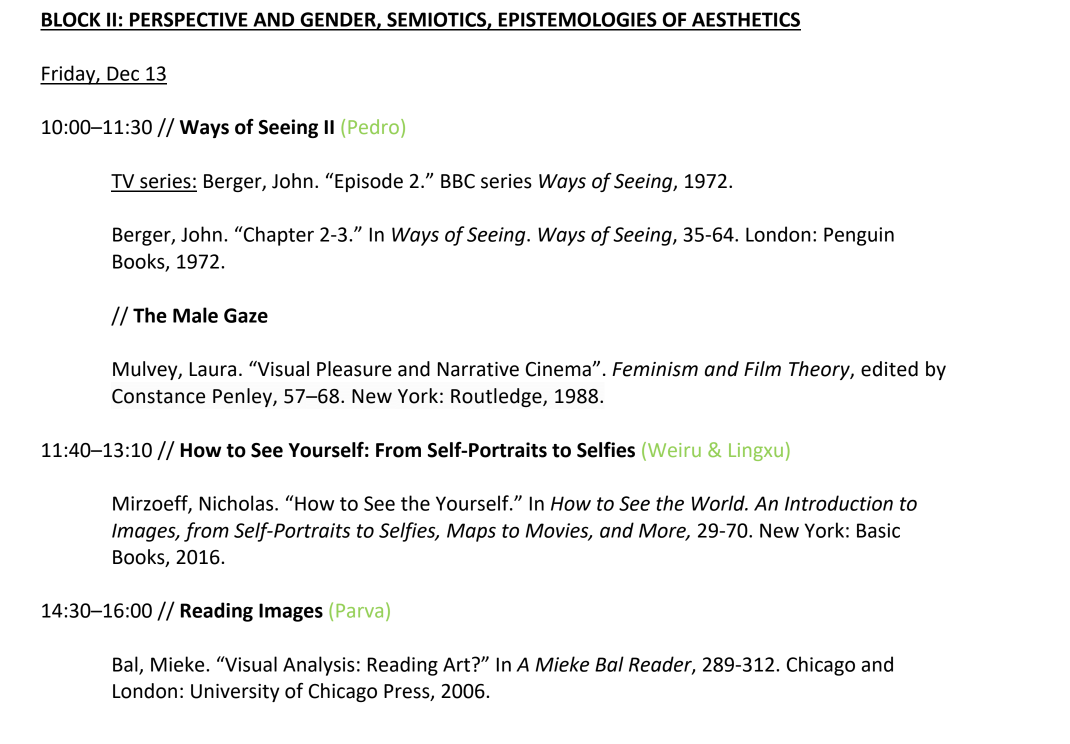
researching art by investigating a stereotype in scientific method to try to find 'truth'
kitsch or popular culture transfers to science to how things that are discovered are named - popular culture informs the science
validation for art as own knowledge institution
as an artist you are always confronted by society 'what are you doing' ? - you are not an artists until you create something that can be used a s a product
in order to get funding e.g. you have to prove the value - need to publication -
what kind of knowledge does art produce? knowledge not in meaning and interpretation but in the process
a constellation through which art reflects on something
is it more regarding art for the individual - the artist ? or the field ?
you take prefixed research and knowledge from science to use it for arts
but here it is suggested that artistic research creates an illusive knowledge production
the knowledge of art is intrinsic in the production and not the interpretation - spectator - Mersch leaves out the coordinate of the spectator
creating knowledge through visualising philosophical study - diagrams that include props that are almost instructions for interaction and dialogue
Adelheid Mers - artistic research
Christine Sun Kim
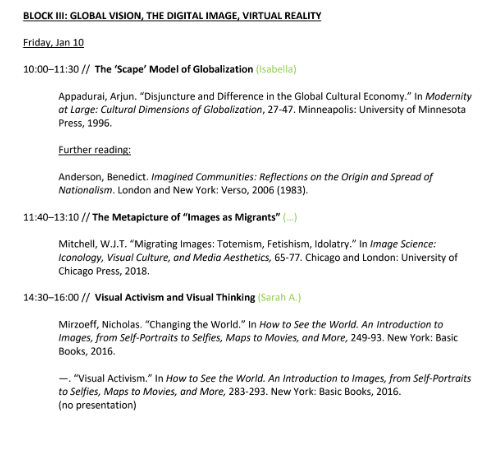
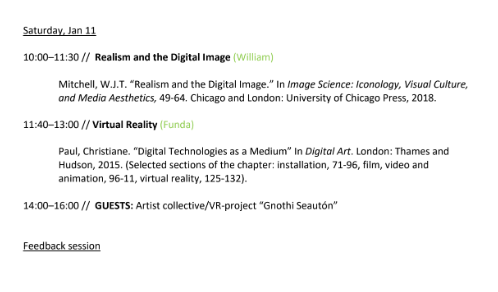
Mitchell - Idolatry, Fetishism and Totemism
fetishism equated with materialism
Marx explains the western valuation of western commodities
money has fetish character - no actual value only in relation to the exchange and what is equated as being in it.
Totems as identity objects.
Conclusion: these objects are objectivist projections - they are secondary belief - the belief of the imperial mind towards the beliefs of other people
But even the most 'woke' person is not immune to giving live to objects/images
Contradiction of the present: on the one hand we have freely moving images, unlimited circulation and on the other the stubborn immobility of bodies and material things
iconoclasm - trying to destroy the image that is believed to hold power for the other
can creating an image be iconoclastic - can words change the representational image?
recent phenomena - what does iconoclasm look like today, the imperial incentive
how do we try to destroy other countries icons today?
There are many historical but less prominent in Western culture today
Iconoclastic technology - destruction of images by means of algorithms
It's not the physical destruction anymore - operates on another level - today it takes different forms
Iconoclasm works against an IDOL, a belief system
It's difficult to assign these 3 terms to todays context because it's coming from an antiquated context - of imperial powers that try to understand 'the other' through these terms
"7 continent" movie e.g. people leave cinema in scene when money gets flushed
fetishisation of money -you see in the object itself all the labour (that is hidden)
that made it possible - entire belief system of monetary value
fetish is more on material level
Mirzoeff
How do you represent 'us'?
Watch Grace Lee Boggs - American Revolution - she sees Detroit of representational of the world
Visionary organising - to think about how life after industrial fossil fuel based culture might be possible - i.e finding new ways to engage with how to imagine change
globalisation is the transition from the industrial economy to something else
People are starting to look as art for lack of being used in economic society
participation for the self and for the people
how political activism drives a wealth of design ingenuity and collective creativity that defy standard definitions of art and design
transaction between what happens on the street and the digital age we live in right now.
appeal: you have to do something, create change
visual activism: in the service of a vision of making change
socially engaged works
something that is very do-it-yourself but brings a lot of attention in public space
What does it mean to be seen to be a citizen in a global era?
Who represents us at local and national levels in a globalised society?
Representation includes this idea that it is according to the self.
For me this opens up the question of am I procentually represented in what is the current situation or is the representation adequate?
I feel like this relates strongly with a feeling of necessity..
Being in a different culture makes you reflect on your cultural identity which becomes more prominent in a contrasting environment. Also, maybe when your entire environment is political you don't feel the need to be yourself because it seems others are already so busy with representation.
Representation on which level? doe sit only become abstract on political level?
Notes for paper:
Can write in first person
add matrikelnr. on cover
add footnotes
summary - paraphrase in own words
indicate if you will relate the text to own work
advance this reflection in the paper
own artworks in relation to one or two ke concepts
when you refer to other theories and text add this in your footnotes and final Bibliography
min. 6 pages - max. 20
send as PDF via email
Realism and the Digital Image:
In the text William James Thomas Mitchell references works from William James Mitchell
The spectre of manipulation, film ( analog) vs. digital photographs.
Digital images only have the illusion of being less reliable and more easy manipulatable
psychics regurgitating meters of linen with pictures in them - lies obscured through the analog digital photograph
Does it follow then that because we can photoshop we can't trust any digital image at all ?
The concept of the genuine image is and ideological phantasm
Digital Images in war - are images being created and used without any human eye behind it - his development has become normalised
Abu Ghraib pictures- images of American war crimes
The viral image - the word viral used for the image > biological link
Life Cycle of the Digital Image
Ellen Degenerase digital response of her defending her friendship to George Bush was ridiculed with a Montage of war crime photos playing behind her.
the fact that these images are there and yet there is this amnesia of these events
are digital and analog binaries? example that analog is continuous experience and digital is not but this doesn't hold true because things can be represented in both formats
Idea of the digital image as an undead, a clone - endless copies with no clear original - creepy to not be able to distinguish?
'the Image Object Post -Internet' - Artie Vierkant
reader authorship - erosion of privat and public
There is nothing automatic about realism in photography - materiality doesn't necessitate realism
Mitchell tries to undercut the myth that digital and analog have a different ontology - the difference is rather in the use - to look at the ontology not as only the being but the being in the world
nothing wrong with beautification - to show something we cannot see with the naked eye
Digital Art
60s military developed first inception of World Wide Web
Experiments in Art and Technology in 1966 beginning of bringing art and technology together
Software exhibition - 'Documenta VI ' in 1977
Introduction of term cyberspace for a data world that people could experience as an organic informational matrix.
cybernetic serendipity
use the computer and express themselves in numbers or in ideas
sculpture calmed by red light - activated by blue light
Dataspace - installation sensing the visitors body and having the room respond accordingly - visitors influence the space for others to follow into
frustration with working with technologies
Live.mix interactive cinema performance - narrative controlled by motion and orchestra
Olia Lianlina, Summer - animation across different web browsers - speed determined by Internet speed
VR as most radical form of entering into virtual environments
How can you present VR projects without having the installation ready / presentation and documentation ?
Question of disembodiment .. and embodiment (haptic aspect)
Leaving the body behind to enter into a different realm where you can't take the visual of your own body with you ... fitting to out of body experience of Ketamin
artists who use the media of their day
Golan Levin Ted Talk - Golan Levin: Art that looks back at you | TED Talk
dance choreographed performance with motion trackers that detect the negative space
phonasthesia - mapping between different perception planes
the fiction that speech casts visible shadows
On the one hand I worry that I should maybe remain in one discipline and become a specialist and super proficient. On the other in our mixed world it makes
and it fits more to me because my interenets are more diveresed and I like to mix and go different directions to bring it all togtehr instead of focusing and sitting with only one medium
what helps is to distinguish where your field is - animation and gaming actually isen't it
ratehr speculative design and installation